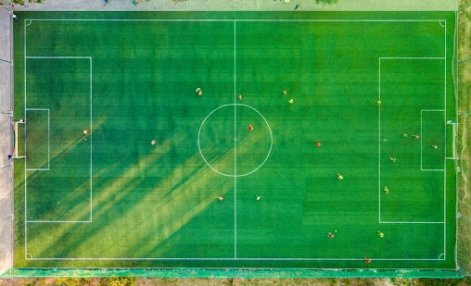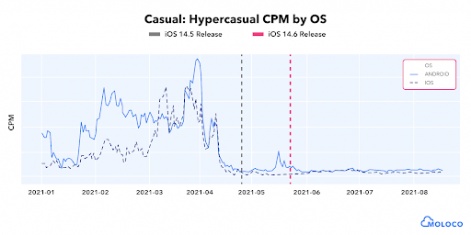Henry Wang is Director of Product Marketing at Moloco.
Hypercasual games are perhaps the most vibrant mobile gaming genre in recent memory.
Despite representing less than 1 per cent of IAP revenue, the category consistently drives almost 50 per cent of downloads for the entire mobile gaming industry, and with good reason. The hypercasual business model, which depends on acquiring users at the lowest possible cost and monetising them primarily through in-app ad impressions, has proven effective and relatively low-risk.

However, in light of Apple’s iOS 14.5 update, many marketers feared that the genre could be headed for trouble. Changes in user privacy had the potential to impact advertising efficacy, potentially leading to lower performance for advertisers and dwindling payouts for publishers.
The landscape did indeed shift. But so far, the fears appear to have been groundless - bid request data from the programmatic advertising ecosystem indicates that hypercasual games are thriving. Activity is up, costs are down, and incumbent monetisation strategies continue to turn a profit, suggesting that the genre’s best days could be yet to come. This may be the ideal moment for publishers who haven’t yet dipped their toes into the hypercasual market to take the plunge.
Hypercasual advertising costs are down after iOS 14.5
In Q1 2021, hyper casual advertising costs were varied - costs fluctuated from January to March, driving corresponding volatility in CPM for the period. This was likely due to the variety of performance pricing models being employed. It wasn’t until April, with the iOS 14.5 launch, that costs dropped precipitously and then held firm at profoundly affordable rates.

There are a few reasons for this. Apple’s privacy changes essentially levelled the playing field in terms of what sorts of campaigns could be run in the absence of user-level identifiers. With only about 20 per cent of users opting in for tracking, the ability to definitively target high-value users largely vanished.
In the hypercasual genre, where IAP conversion and ARPPU are notoriously low and monetisation success depends on the volume of ad impressions served, nearly all advertisers are now equally likely to acquire high-value users through straight forward cost-per-install (CPI) campaigns. This new equilibrium had a significant effect on activity levels in the programmatic advertising ecosystem.
Not pictured above is the fact that at the end of May, the release of iOS 14.6 triggered a massive influx of new hypercasual advertising campaigns. Total number of campaigns increased by almost 1,000 per cent practically overnight. The newly levelled playing field triggered a quiet gold rush that continues to rage. Without any individual advertiser having a strategic advantage over another, costs normalised at the lower end of the scale as campaigns flooded the ecosystem and normalised advertising costs in the process.
What can marketers expect moving forward?
The most important insight this data reveals is that even with Apple’s latest updates, hypercasual ad models are still viable. What’s changed is the ideal strategy – launching more campaigns with smaller budgets. A single advertisement with $10,000 in ad spend will have a higher CPM than 10 campaigns spending $1,000, even if aggregate performance stays the same.
This kind of approach has benefits and drawbacks. On the downside, there is far less diversity in who hypercasual marketers can target with their ads. The good news is that risks are minimal, which will inspire marketers to find creative targeting solutions to replace IDFA practices.
Which strategies will see marketers through this transition?
The coming months will represent a time of exciting experimentation as hypercasual marketers chart a new course for their genre. The following best practices are an ideal place to start:
- Diversify your media spend: As the above data illustrates, now is the time to diversify. Spread your budgets across smaller campaigns and focus on the creative assets that resonate with players
- Experiment with ROAS-based optimisation: If your tech stack allows it, focus on ROAS-based performance campaigns wherever possible, using ad revenue and/or IAP revenue as the KPI. While this may increase your CPM, it will also reduce unnecessary spending and increase the value of each converted player
- Strike while the iron is hot: CPMs are low now, but that might change as more marketers explore outcome-based campaign models. Until then, now is the time to get ahead of the curve and run some valuable experiments yourself
Hypercasual games are here to stay. But marketers have a rare opportunity to establish themselves in a transformed privacy landscape. Those who move forward with confidence will find the category still has much to offer.





















